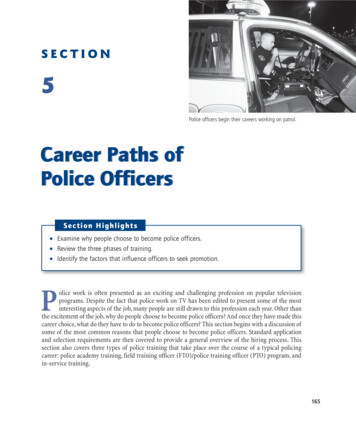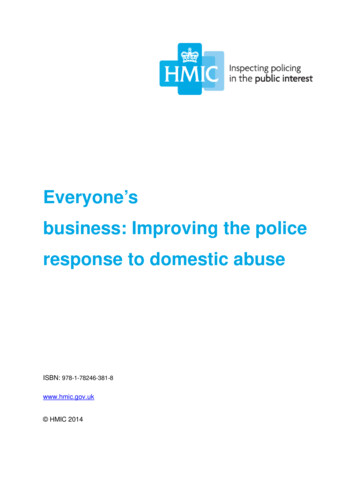
Transcription
Everyone’sbusiness: Improving the policeresponse to domestic abuseISBN: 978-1-78246-381-8www.hmic.gov.uk HMIC 2014
ContentsExecutive summary . 5Introduction . 5Main findings . 6Organisational issues . 8First contact . 10Initial response . 11Action taken . 13Working with partners . 15Management of risk . 16Conclusion . 17Recommendations . 19Introduction . 26Domestic abuse in England and Wales . 28All figures relate to the 43 force data returns and are for the twelve-month periodto 31 August 2013. 28Definition of domestic abuse . 29Who are the victims of domestic abuse? . 30How victims report? . 31Who are the perpetrators? . 33What do perpetrators do? . 34Is the definition of domestic abuse fit for purpose? . 35Identifying victims of domestic abuse . 38Front desk and call handler responses . 38Responding to domestic abuse calls . 39Sending officers to domestic abuse incidents . 42Supervision in the force control room or communications centre . 44Police stations . 45Action needed . 45Responding to victims of domestic abuse . 47Overall quality of response and attitudes of responding officers. 48Quality of initial investigation: build the case for the victim . 55Safeguarding the victim at the scene . 61Risk identification and assessment in domestic abuse . 66Risk assessment tools and processes . 66Inconsistencies of approach . 69Supervision of risk assessment . 712
Children at domestic abuse incidents . 72Supervision of officers . 78Action needed . 79Action taken . 80Keeping the victim safe and engaged . 80Checking initial risk assessment and reviewing . 82Specialist domestic abuse teams and ongoing case management . 84Keeping the victim informed . 86Role of neighbourhood policing teams in victim safeguarding . 87Neighbourhood policing and supporting victims of domestic abuse . 88Working in partnership to protect victims from harm . 90Multi-agency risk assessment conferences (MARACs) . 90The role of IDVAs and other specialist services . 95Investigating crimes and bringing offenders to justice . 98Restorative justice . 101Evidence-led prosecutions . 101Reducing risk by managing perpetrators and learning from previous mistakes . 106Disrupting and targeting domestic abuse perpetrators . 106Tackling domestic perpetrators in Scotland . 107Perpetrator programmes. 108Domestic Homicide Reviews . 110Force performance . 113Making domestic abuse a force priority . 116Leadership in police forces and by police and crime commissioners. 116Measuring performance . 119Awareness, culture, attitudes and training. 122Conclusion . 127Glossary . 128Annex B. 142Holding to account: tackling domestic abuse . 142Checklist for police and crime commissioners . 142Nine questions for the force . 142Nine pieces of data for routine monitoring . 146Annex C . 148HMIC’s Domestic Abuse Reference Group . 148Annex D . 150About the data . 150Data verification . 151Data completeness . 151Note on the use of data . 1523
Data verification . 153Data completeness . 153Note on the use of data . 153Survey data . 153Focus group data . 1554
Executive summaryIntroductionThe extent and nature of domestic abuse remains shocking. A core part of thepolicing mission is to prevent crime and disorder. Domestic abuse causes bothserious harm and constitutes a considerable proportion of overall crime. It costssociety an estimated 15.7 billion a year. 1 Seventy seven women were killed by theirpartners or ex-partners in 2012/13. 2 In the UK, one in four of young people, aged 10to 24, reported that they experienced domestic violence and abuse during theirchildhood. 3 Forces told us that crime relating to domestic abuse constitutes someeight percent of all recorded crime in their areas and one third of their recordedassaults with injury. On average the police receive an emergency call relating todomestic abuse every 30 seconds.Other agencies and partners share the responsibility to tackle domestic abuse andkeep victims safe; it does not rest solely with the police. However, the police have anessential role to play.In September 2013, the Home Secretary commissioned HMIC to conduct aninspection 4 on the police response. We were asked to: report on the effectiveness of the police approach to domestic violence andabuse, focusing on the outcomes for victims and whether risks to victims ofdomestic violence and abuse are adequately managed; identify lessons learnt from how the police approach domestic violence andabuse; and make recommendations in relation to these findings when consideredalongside current practice.1Walby, S. (2009). The cost of domestic violence.Office for National Statistics (2013). Focus on violent crime and sexual offences 2012/13 – Chapter4: Intimate Personal Violence and Partner Abuse. Retrieved from:http://www.ons.gov.uk/ons/dcp171776 352362.pdf23Radford L, Corral S, Bradley C et al (2011) Child abuse and neglect in the UK today. iew-of-police-response-to-domestic-violence5
To answer these questions, HMIC collected data and reviewed files from the 43Home Office-funded forces. We spoke to 70 victims of domestic abuse who took partin focus groups throughout England and Wales (and a number of other victims inone-to-one interviews) and surveyed over 500 victims on-line. We also surveyednearly 200 professionals working with victims of domestic abuse.HMIC inspected all police forces in England and Wales, interviewing senior andoperational leads, and held focus groups with frontline staff and partners. We carriedout visits to police stations (which were unannounced) to test the reality of the forces’approaches with frontline officers.Our inspection teams were supplemented by experts in the field of domestic abuse.These included public protection experts from more than 15 forces and thoseworking with victims of domestic abuse in voluntary and community sectororganisations.Main findingsThe overall police response to victims of domestic abuse is not good enough. This isdespite considerable improvements in the service over the last decade, and thecommitment and dedication of many able police officers and police staff. In too manyforces there are weaknesses in the service provided to victims; some of these areserious and this means that victims are put at unnecessary risk. Many forces need totake action now.Domestic abuse is a priority on paper but, in the majority of forces, not in practice.Almost all police and crime commissioners have identified domestic abuse as apriority in their Police and Crime Plans. All forces told us that it is a priority for them.This stated intent is not translating into operational reality in most forces. Tacklingdomestic abuse too often remains a poor relation to acquisitive crime and seriousorganised crime.6
The factors that contribute to this in many forces are: a lack of visible leadership and clear direction set by senior officers; alarming and unacceptable weaknesses in some core policing activity, inparticular the collection of evidence by officers at the scene of domestic abuseincidents; poor management and supervision that fails to reinforce the right behaviours,attitudes and actions of officers; failure to prioritise action that will tackle domestic abuse when setting thepriorities for the day-to-day activity of frontline officers and assigning theirwork 5; officers lacking the skills and knowledge necessary to engage confidently andcompetently with victims of domestic abuse; and extremely limited systematic feedback from victims about their experience ofthe police response.Police forces must take urgent action to improve the effectiveness of the service theyoffer to victims of domestic abuse; if they do this they will ensure that the risk tovictims is better managed and, ultimately, they are made safer. Ourrecommendations set out what needs to be done to secure lasting change.Although HMIC identifies an urgent need to improve the police response to victims ofdomestic abuse, our conclusions should not detract from the tireless work of manyofficers and staff in both frontline and specialist roles. They are often doing their verybest to keep victims safe, sometimes when there is little support from the widerorganisation. There can be little kudos attached to being a domestic abuse specialistin the police service and all too often their achievements, and those of other frontlinestaff working in this area, wrongly go unrecognised.5Police forces and police officers refer to this practice as “tasking”7
Organisational issuesTackling domestic abuse well is vitally important. It is a complex and sensitive issue.No two domestic abuse environments are the same, and some victims have sufferedin silence for years or even decades. The police need to have the right tools,resources, training and partnerships in place to enable them do their job as well asthey should. A proper understanding of domestic abuse, and an appreciation of theharm it causes to victims and their children, is essential if officers are to carry outeffectively their core policing activities of keeping victims safe, preventing crime,investigating crime and bringing offenders to justice.Much has changed since HMIC inspected police forces on their response todomestic abuse a decade ago 6. Specialist domestic abuse units have been createdin forces with expert investigative capabilities. Support to high-risk victims 7 has beentransformed, with independent domestic violence advisers (IDVAs) and multi-agencyrisk assessment conferences (MARACs) in place to make sure that victims haveaccess to a range of support. There is now a more systematic approach to riskidentification that almost all forces have adopted, and although this still requiresattention, it is very much a step in the right direction. Guidance, practice and policieson domestic abuse mean victims are more routinely identified when they call thepolice, and the police attend promptly. 8The police service has faced a significant austerity challenge over the last four years,resulting in reduced budgets and substantially fewer police officers and staff. It isencouraging, therefore, that forces have managed largely to protect their investmentin specialist domestic abuse services.6Violence at Home: A joint thematic inspection of the Investigation and Prosecution of CasesInvolving Domestic Violence, HMCPSI and HMIC, February 2004.www.hmcpsi.gov.uk/documents/reports/CJJI THM/BOTJ/DomVio0104Rep.pdf7High risk victims are described as those where there are “identifiable indicators of serious harm. Thepotential event could happen at any time and the impact would be serious”. Serious harm is a “riskwhich is life threatening and/or traumatic; and from which recovery, whether physical or psychological,can be expected to be difficult or impossible.” From the DASH ds/pdfs/DASH%202009.pdf8Detail of these changes can be found at Annex A to this report.8
Despite this progress and investment, not all police leaders are ensuring thatdomestic abuse is a priority in practice. HMIC found that many forces do not assignto officers work to prevent, reduce and tackle domestic abuse effectively. Soopportunities to target perpetrators are missed and forces’ performancemanagement systems seldom promote and assess the effectiveness of the policeresponse to victims of domestic abuse.Leadership has a profound effect on the culture of the force and the attitudes ofpolice officers who are dealing with domestic abuse. It is vital that police leadersreinforce the right attitudes and behaviours. Victims told HMIC that they did notalways feel believed or that they were being taken seriously by the police.Sometimes they felt judged.Many frontline officers, and in some cases specialist police officers, lack the skillsthey need to tackle domestic abuse effectively. Officers are often ill-equipped toidentify dangerous patterns of behaviour in domestic abuse perpetrators accurately,in particular where there is no overt physical violence but instead there ispsychological intimidation and control, which can also have fatal consequences.Officers often have little or no information about the victim or the perpetrator whenthey arrive at the scene. Outdated information technology and poor force informationsystems are preventing vital information from being placed in the hands of frontlineofficers quickly.HMIC is concerned about the poor attitudes that some police officers display towardsvictims of domestic abuse. This may stem from a lack of understanding. The currentapproach to training, which is largely reliant on e-learning, 9 is failing to address thisissue. While recognising the financial constraints that forces are under, there is anurgent need to overhaul domestic abuse training. HMIC sees little, if any, value in elearning as an effective training method as it limits the opportunity for discussion,reflection and checking understanding. Some forces have built short face-to-facetraining sessions for response officers into their daily briefing meetings at little cost.9Typical e-learning is where an individual reads information on a computer and then answers a shortmultiple-choice test.9
There is evidence of ineffective supervision of all ranks, often with a failure tochallenge poor attitudes. We found limited examples of forces thinking creativelyabout how to improve officers’ knowledge, understanding, and, consequently, theirability to deal with domestic abuse victims with confidence.The voices of victims need to be heard to make sure the police response is focusedon them. Feedback from victims helps forces to plan appropriate services. It alsoprovides a means of assessing how well the force is performing. We found very fewexamples of forces routinely seeking the views of victims of domestic abuse. HMICunderstands that this needs to be done sensitively and safely, but it is important thatit happens.First contactThe first time a victim of domestic abuse contacts the police is, in most cases, notthe first time they have experienced it. Sometimes their life and the lives of theirchildren may be in immediate danger. Those answering that telephone call for helpneed to be able to recognise domestic abuse; to reassure the victim; and to advisethem on how to keep safe. They need to judge how quickly a police officer should besent. That officer needs to have a full picture of what has happened to the victim inthe past. It is vital they have the right information so they can take the most effectiveaction to support the victim when they get there.HMIC found that staff answering 999 calls usually understand the definition ofdomestic abuse and mark cases accordingly on their information systems. Theymake sure that in the vast majority of cases an officer responds either immediately orwithin the hour. We saw many good examples of call handlers getting the rightinformation from victims and providing them with sound advice on how to keep safeuntil the responding officer arrived.There are aspects of this first contact that could be improved. Some forces eitherhave no definitions of what constitutes a repeat (in terms of previous police contact)or vulnerable victim, and in some forces the definitions are not well understood bystaff. Where a definition of a repeat victim is in place, it varies from force to force. Ifforces are unable to identify repeat victims, and convey the history of the abuse they10
have suffered to the responding officer, then valuable opportunities to identify andsafeguard the victim on arrival are likely to be missed.Initial responseThe quality of the response of an officer attending a domestic abuse incident is justas important as the speed with which they turn up. A responding officer is expectedto keep the victim and their children safe; give them confidence in the policingresponse; assess future risk so that the force can keep them safe in the longer term;investigate the incident; and gather evidence to support a prosecution. It can becomplex and sensitive work. In some cases, victims can appear to be uncooperativewhen in reality they may be terrified, being controlled by the perpetrator and indesperate need of support. Officers too can be under pressure due to the busy andvaried nature of a response shift.Victims’ experiences of the initial response are very mixed. All too often, the qualityof the service that a victim receives is entirely dependent on the empathy,understanding and commitment of the individual attending. Without effectivesupervision and training in place forces are leaving the matter of the competenceand capability of the responding officer almost entirely to chance. The service thatsome of the most vulnerable victims in our communities receive from the policeshould not be a lottery.We conducted an on-line survey of over 500 victims of domestic abuse. Seventynine percent of the victims who had reported the incident to the police were satisfiedwith the initial police response, which is positive. When asked the main reasons fortheir satisfaction, one of the most common reasons was the speed of the policingresponse (14 percent). Another common reason (14 percent) said it was becauseofficers were helpful. Although a high number of victims felt satisfied, a third felt nosafer or less safe after the initial response.HMIC discussed the issue of the initial response in nine focus groups with 70 victims,allowing for deeper exploration of the behaviours of officers and the impact this canhave. Many of the victims we spoke to were higher risk and had multiple contactswith the police. The majority had experienced very poor attitudes at some point from11
responding officers. Victims told us that they were frequently not taken seriously, thatthey felt judged and that some officers demonstrated a considerable lack of empathyand understanding. Some of these behaviours were also observed during ourinspections of forces. A swift policing response is necessary but it is not sufficient.The poor attitudes of some officers can have a very serious adverse effect on theconfidence of victims.In many forces, HMIC found alarming and unacceptable weaknesses in thecollection of evidence by officers after arrival at a domestic abuse scene. We havevery serious concerns about the quality of the initial investigation. In a file review of600 domestic abuse cases of actual bodily harm (where the victim will have a visibleinjury), HMIC found that photographs of the injury were taken in only half of thecases, and in three cases out of ten the officer’s statement lacked important detailssuch as a description of the scene or the injuries of the victims. There is extensivenational police policy and practice on how police officers should carry out corepolicing tasks including crime investigation. It is simply not good enough that officersare not carrying out the tasks of evidence-gathering in cases of domestic violence ina professional and consistent way. It is a core part of officer competence.Almost all forces told us that they expect responding officers to take ‘positive action’at a domestic abuse incident. This term is confusing; it means different things todifferent officers and is open to wide and unhelpful individual interpretation. Oftenfrontline officers do not understand what is meant in practice by ‘positive action’. Onoccasions, victims might ask officers not to arrest the perpetrator. Officers need tounderstand that there may be complex reasons behind this request. HMIC isconcerned that the lack of clarity as to what ‘positive action’ actually means canresult in perpetrators of domestic abuse not being arrested when the officer hasgrounds to do so. This view is supported by the evidence, which showsunacceptable variation in the extent to which police officers arrest those suspected ofa domestic abuse crime. In most forces, the number of arrests as a proportion ofcrime identified as domestic abuse is between 45 percent and 90 percent.Responding officers should be reminded that it is their job to attend the incidentswiftly, identify the victim and the perpetrator, gather evidence that will support a12
criminal justice sanction if a crime has been committed, keep the victim safe andtake the proper action. This means where the officer can justify the arrest – theofficer should normally make an arrest. On the rare occasions where an arrest is notmade, the officer must provide a recorded rationale to justify this.Finally, the issue of risk identification requires urgent attention. The initial riskassessment process is important in making sure that the victim is both kept safe atthe scene and can be protected properly from future harm. While the police servicehas an agreed risk assessment form, DASH (which stands for domestic abuse,stalking and harassment), the extent to which it is used by responding officers andthe way in which it is used, vary significantly from force to force. There is often apoor understanding on the part of officers of the factors for risk assessment. Toooften the completion of the DASH form is seen as a compliance exercise rather thanone that is necessary to protect the victim. The measure of a successful policeresponse to a domestic abuse incident should not be whether a form has been filledin. It should be whether the officer has correctly identified the level of risk, has takenappropriate action to keep the victim safe as a result and has obtained or protectedevidence necessary for an appropriate prosecution.Action takenHMIC found a large number of committed officers working in domestic abusespecialist units, but in many forces there are significant weaknesses in how forceskeep victims safe and support them through the criminal justice process. Theseinclude: unnecessary duplication of risk assessments, delays in allocating cases andconfusion across the police force about who is responsible for supporting thevictims; uncertainty amongst officers and staff within forces about who is responsiblefor what element of victim care and the investigation; assessment of risk based solely on an unverified rigid tick-box approachrather than professional judgment and the weighing of different factors byexperts and specialists;13
limited systematic approaches to re-assessing risk at known trigger points, forexample when the perpetrator is released from police custody; reviewing standard and medium risk cases following a pattern of repeatincidents, but where the number of incidents that have to occur before areview is triggered is unacceptably high. Even more concerning is whereforces have no policy of review after repeat incidents; and risky gaps in the capability and capacity of specialist domestic abuse unitswhich may be under-resourced and overwhelmed. This is often due to highlevels of vacancies (in some cases due to stress), unsustainable workloads,limited or no additional training, and lack of effective support and supervision.As a result of these weaknesses, victims who have not been correctly identified ashigh risk are in danger of not being offered the appropriate safeguarding services.High risk cases are usually dealt with by specialist police officers who tend to havebetter knowledge and understanding of domestic abuse, and referrals are made to arange of other agencies that can help to support these victims. Some forces havethought creatively about tackling the problems highlighted. HMIC saw some goodexamples such as: secondments and attachments to work in the specialist areas, in some caseslinked to career progression as a detective; giving clear instructions to, and integrating well with, neighbourhood teams, sodomestic abuse is everyone’s business and a wider resource is devoted tosupporting victims; additional training for some PCSOs to provide support to victims in thecommunity; and use of independent domestic violence advisers in police stations to help buildthe capability and expertise of officers.Crimes associated with
In September 2013, the Home Secretary commissioned HMIC to conduct an inspection. 4. on the police response. We were asked to: report on the effectiveness of the police approach to domestic violence and abuse, focusing on the outcomes for victims and whether risks to victims of domestic violence and abuse are adequately managed;


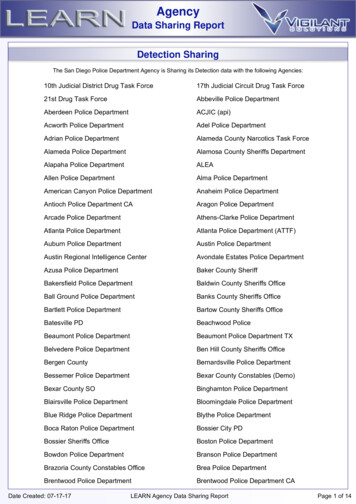

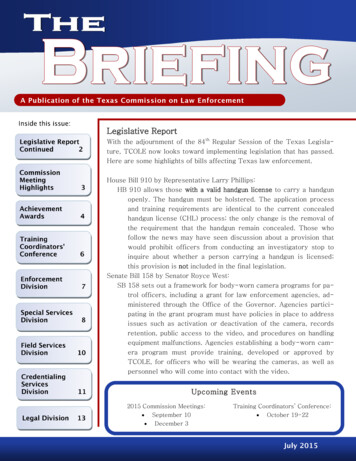
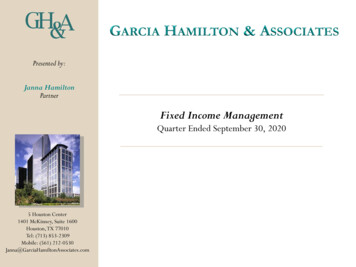
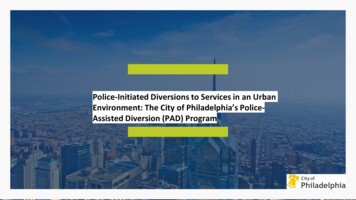
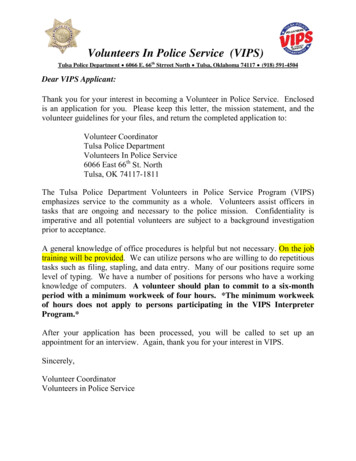
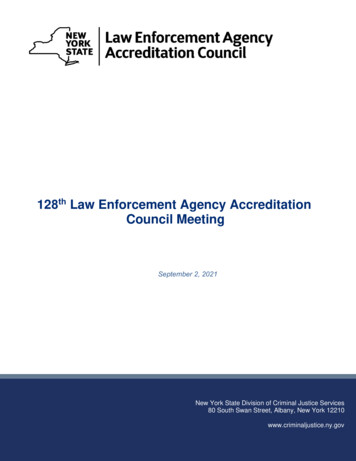
![Vohne Liche Kennels 6SHFLDOL]LQJLQ6WUR QJ6RFLDO3ROLFH'RJVµ](/img/38/reference-listing.jpg)
